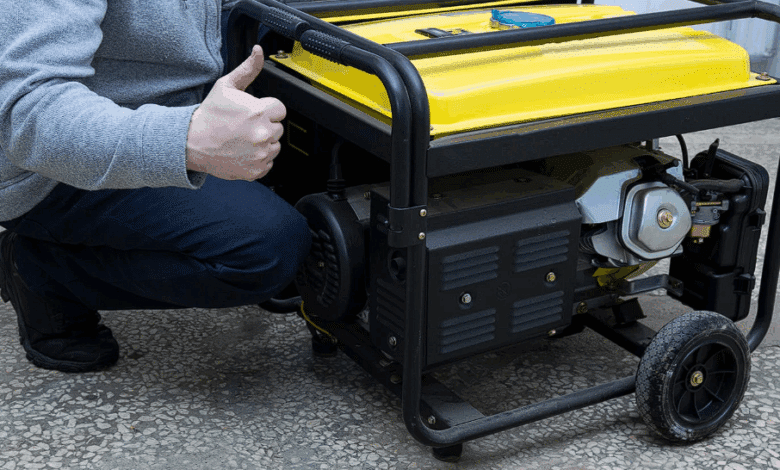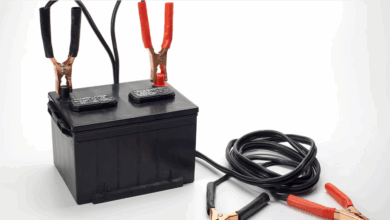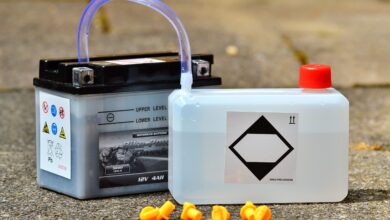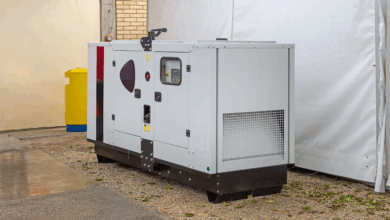Generator Safety Tips: Prevent Carbon Monoxide Poisoning, Fires, and Electrical Hazards

Generators are incredibly helpful during extended power outages, storms, and outdoor activities. However, improper use can lead to serious risks—including carbon monoxide poisoning, fires, and electrocution.
In this safety guide, we’ll walk you through the essential generator safety tips, from placement and ventilation to fuel storage and lifting techniques. Understanding and following these precautions can prevent accidents and save lives.
Real-Life Warning: The Importance of Generator Safety
On January 8, 2022, 22 people tragically died in Murree, Pakistan due to carbon monoxide poisoning while trapped in vehicles during a snowstorm. Similarly, over 900 deaths occurred in the U.S. between 2005 and 2017 due to carbon monoxide poisoning from portable generators, according to Consumer Reports.
Generators are lifesaving tools—but only when used safely and correctly.
Table of Contents
- Carbon Monoxide Safety
- Fuel Handling and Fire Prevention
- Portable and Standby Generator Electrical Safety
- Routine Generator Maintenance
- Safe Lifting Techniques
Carbon Monoxide Safety
Carbon monoxide (CO) is a silent killer—it’s colorless, odorless, and highly toxic. Without proper ventilation, it can build up quickly and cause fatal poisoning.
Key Safety Tips:
- Never use a generator indoors or in enclosed areas like garages, basements, or tents—even with windows or doors open.
- Place the generator at least 20 feet away from windows, doors, vents, and living spaces.
- Choose a model equipped with CO sensors or shutoff features like a CO-MINDER.
- If your generator doesn’t include a CO detector, install a battery-powered CO alarm nearby as an extra layer of protection.
Fuel Handling and Fire Prevention
Gasoline is extremely flammable and should always be handled with caution.
To prevent burns and fires:
- Turn off and cool the generator before refueling.
- Never refuel near flames or hot surfaces—spilled gasoline can ignite instantly.
- Avoid overfilling the fuel tank. Leave space to allow for expansion.
- If storing your generator:
- Drain the fuel to prevent vapor buildup.
- If you don’t drain the tank, seal it tightly using a locking cap (many generators come with this feature).
- Drain the fuel to prevent vapor buildup.
- Keep fuel in approved containers and store it away from ignition sources like pilot lights or sparks.
Portable and Standby Generator Electrical Safety
Generators produce high voltage, and improper setup can be deadly.
Follow these steps for safe electrical use:
- Use your generator on a dry, stable surface—never in wet conditions or on wood that could be damaged by vibrations.
- Avoid operating in the rain unless covered by a generator tent or canopy rated for electrical equipment.
- Always disconnect your home’s main power before starting the generator to prevent backfeeding, which can endanger utility workers and neighbors.
- Ensure your generator is properly grounded to prevent electrical shocks.
- Use only heavy-duty, outdoor-rated extension cords suitable for the generator‘s power output.
- Never plug the generator into a wall outlet. Instead, have a licensed electrician install a transfer switch to safely connect it to your home’s breaker panel.
- Don’t run the generator at full load continuously. If your unit is rated at 3600 running watts and 4000 peak watts, use less than that to prevent overheating and reduce wear.
Routine Generator Maintenance
Regular maintenance extends the life of your generator and ensures it performs safely when needed.
Maintenance Tips:
- Inspect the fuel tank, hoses, and valves for leaks or cracks.
- Change the engine oil and spark plugs at recommended intervals.
- Using old or dirty oil can cause overheating, reduce efficiency, and lead to irreversible damage to the engine.
Neglecting maintenance doesn’t just lower performance—it can also make your generator unsafe.
Safe Lifting Techniques
Many users don’t think twice about lifting their generator—until they injure their back. Improper lifting can lead to serious conditions like sciatica or herniated discs.
How to lift safely:
- Bend your knees, not your back.
- Squat fully and lift using the strength of your legs.
- Keep the generator close to your body and avoid twisting while lifting or moving it.
I once made the mistake of using my back instead of my legs to lift a portable generator—and ended up with a bulging disc. Learn from my mistake and lift smart.
Generators are powerful, practical tools—but only if used with safety in mind. From proper ventilation to fuel handling and electrical setup, these tips are crucial for protecting yourself, your family, and your property.
Take the time to follow these safety measures, and your generator will be a reliable, life-saving asset—rather than a potential hazard.




![How to Bypass CO Sensor on Generator – [4-Step Safety Guide]](https://www.generator411.com/wp-content/uploads/2025/08/co-sensor-on-generator-390x220.png)